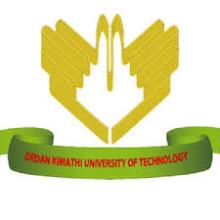Resource information
Land use/cover changes are pervasive with no clear understanding of their spatial extends, drivers and impacts to society. Land-use changes have become a key component in the current strategies for managing and monitoring the natural resources and environment changes. The purpose of this study was to assess the land covers change and decline in sugarcane farming using a three time series of Landsat satellite images of 1984, 2000 and 2015. The study was guided by the following specific objectives: to determine the characteristics of land use land cover using satellite images, to evaluate the drivers to land use land cover change and to evaluate the impact of land use/cover changes to society.Primary and secondary datawere used for the study. Primary data collection involved actual field visit to capture data such GPS points while secondary data were collected from different sources composed of different kinds such as:Landsat images, population data, top sheets, Google earth and transport and rainfall among others. Data integration involving combination data from different sources enabled evaluation of the driving forces and impacts of land use/cover change.Image pre-processing included: image spatial sub-setting, radiometric correction, pan sharpening and image enhancement. Image processing included supervised classification with maximum likelihood algorithm to determine six classes of land use/cover. Error matrix as opposed to single data assessed the accuracy of the classified image and found within acceptable limits. Theanalysed data were presented in the form of maps, tales ad graphs.The findings on land use/cover image map from processed data revealed six information classes as sugarcane, maize, other vegetation, built-up, water body and barren land. Maize and sugarcane had the most significant land use/cover changes of 54% increase and 39% reduction respectively. The driving forces included population, size of land and transport infrastructure. Lack of proper management resulted to population encroachment into other land use fields haphazardly in search of space to live and work.The findings finally revealed that land use chages evidenced by decline in sugarcane.farming brought economic downfall resultig into: poverty, low education and insecurity. The study recommended that information onland uselcover should be provided consistently to control discipline on human and natural action on land having human dimension as greatest factor of land use/cover change. The technique canaid in reforming the current management of land features to proper planned and controlled land use.Remotely sense data therefore shouldfind use in all fields of application with agreeable results.



